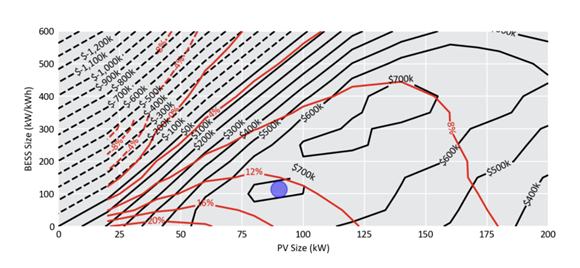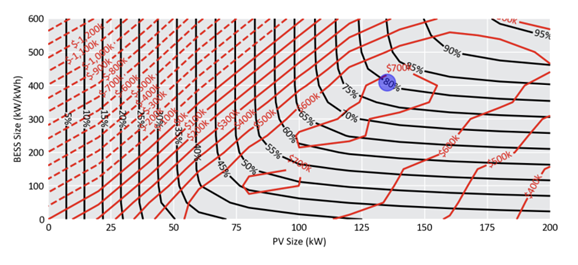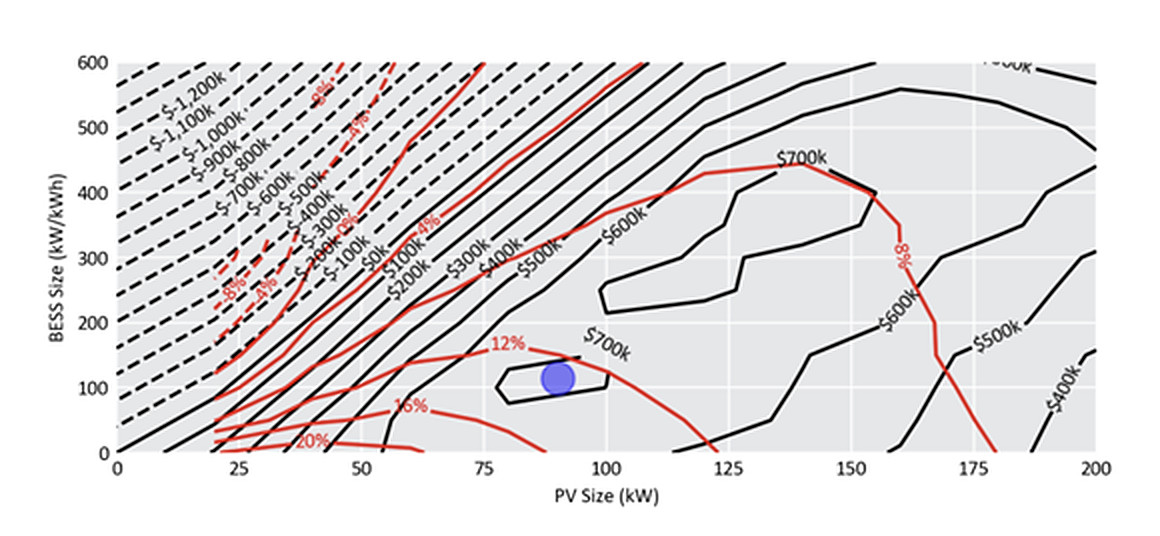From pv magazine Global
Off-grid and edge-of-grid power systems have increased in prevalence and complexity over the past several decades as the cost of solar PV, and now energy storage, has dropped substantially. With the maturation of the off-grid and edge-of-grid power market, investors have also become more savvy. Thus, it is critical to understand how to plan a project that meets the needs of the asset owner, the end users and all other stakeholders. While the type of analysis typically focuses primarily on project economics, it is important to consider social, behavioral and environmental factors as well.
A report developed by IEA PVPS Task 18, aims to provide guidance to stakeholders who are involved in the design and development of off-grid photovoltaic (PV) projects by providing a comprehensive guide to feasibility studies. It is intended to be used as a reference tool during the early stages of planning and decision-making processes for such projects.
All feasibility studies are different; every project develops in a unique context that consists of different locations, stakeholders, site conditions, aims, constraints, and opportunities. Unfortunately, there have been many examples of well-meaning but poorly considered projects that have partially or wholly failed to deliver on their promise and/or potential. The reasons for these failures are many and varied but, in many cases, can be attributed to mistakes and misunderstandings in the initial feasibility phase of the project.
According to the Task 18 report, the key steps involved in conducting a feasibility study are:
· Identification of project objectives: This section provides guidance on how to engage with project stakeholders to ascertain the desirable outcomes of the project. These outcomes may be financial, social and/or environmental.
· Site Selection and Resource Assessment: This section provides guidance on how to select a suitable site for an off-grid PV project and how to assess its solar resource potential. It highlights the importance of accurate weather data and solar radiation measurements, and provides guidance on how to conduct on-site measurements.
· System Design: This section provides guidance on how to design an off-grid PV system that meets the project’s objectives and site constraints. It covers key design considerations such as system sizing, component selection, and system reliability.
· Financial Analysis: This section provides guidance on how to conduct a financial analysis of an off-grid PV project, including cost-benefit analysis, cash flow analysis, and project financing options.
A case study is presented in the report from a remote indigenous-owned and operated cattle station located 10 km from the grid in Australia’s Northern Territory (NT). This cattle station is powered by a diesel generation system. The client in this case study required a feasibility assessment to decide whether to continue powering the site business as usual (BAU), connect to the grid, or upgrade the power system to a PV / BESS / Diesel Hybrid. Furthermore, if the feasibility study indicates it is beneficial to install a standalone hybrid power station, the Client will need to know how different system designs (i.e. smaller vs. larger systems) will impact the economic, social and environmental project outcomes.
The client wishes to:
· Maximise financial returns
· Improve power system reliability
· Minimise operational cost volatility
· Improve environmental sustainability
Using these design criteria, the case study seeks to understand whether the client should remain BAU, connect to the grid or develop a PV / BESS / Diesel Hybrid system. The case study goes on to develop a full load and supply profile analysis and assigns the appropriate capital expenditure (Capex) and operational expenditure (Opex) to each option.
The output metrics can then be viewed in various ways in order to demonstrate to the client the trade-offs that can be made between the identified design criteria. The feasibility study (and thus the case study) utilize contour (aka topological) graphs for multivariant analysis. For example, if the client wished to optimize based on Net Present Value (NPV) and Internal Rate of Return (IRR) by varying the BESS size and the PV System size, the following graph demonstrates these relationships.

Where the black-dotted contour lines represent negative NPV, the black-solid contour lines represent positive NPV and the red contour lines represent IRR. Given this multivariant analysis, the optimization can be placed where NPV and IRR are greatest and this is shown using the blue dot.
The above optimization is purely financial, however, if the client wished to view an environmental metric as the Renewable Energy Fraction (REF) which represents the amount of energy supplied from a renewable source as a percentage of total energy supply, versus a financial metric such as NPV, the following contour graph could be used.

It can be seen that selecting a different optimization criterion will change the desired BESS and Solar PV system sizes.
The IEA PVPS Task 18 report shows how stakeholder engagement and multivariant, multi-criteria optimization can be used to find the best outcomes for the project. Overall, the report provides a comprehensive guide to conducting feasibility studies for off-grid PV projects, providing stakeholders with the tools and information necessary to make informed decisions throughout the planning and development process.
This article is part of a monthly column by the IEA PVPS programme. It was contributed by IEA PVPS Task 18 – Off-Grid and Edge-of-Grid PV Systems. Further information can be found in Task 18’s recent report: Blueprint on how to conduct feasibility studies on off-grid and edge-of-grid power systems.
By Christopher Martell, GSES, Australia
The views and opinions expressed in this article are the author’s own, and do not necessarily reflect those held by pv magazine.
This content is protected by copyright and may not be reused. If you want to cooperate with us and would like to reuse some of our content, please contact: editors@pv-magazine.com.








By submitting this form you agree to pv magazine using your data for the purposes of publishing your comment.
Your personal data will only be disclosed or otherwise transmitted to third parties for the purposes of spam filtering or if this is necessary for technical maintenance of the website. Any other transfer to third parties will not take place unless this is justified on the basis of applicable data protection regulations or if pv magazine is legally obliged to do so.
You may revoke this consent at any time with effect for the future, in which case your personal data will be deleted immediately. Otherwise, your data will be deleted if pv magazine has processed your request or the purpose of data storage is fulfilled.
Further information on data privacy can be found in our Data Protection Policy.